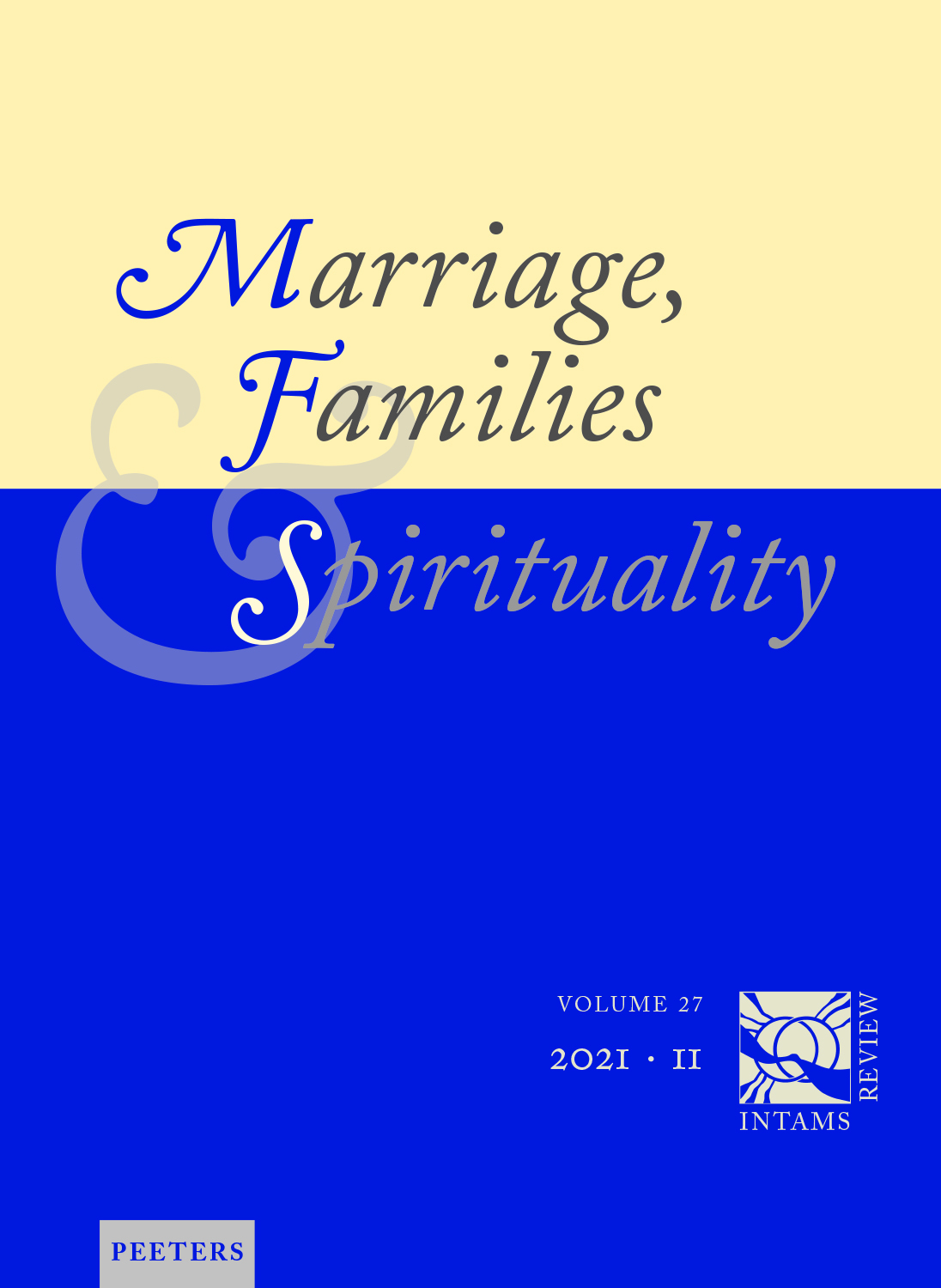 previous article in this issue previous article in this issue | next article in this issue  |

Preview first page |
Document Details : Title: Le sacrament du mariage dans l'Église orthodoxe Author(s): SADKOWSKI, Alexandre Journal: Marriage, Families & Spirituality Volume: 11 Issue: 2 Date: Autumn 2005 Pages: 259-267 DOI: 10.2143/INT.11.2.2014378 Abstract : Alexandre Sadkowski, of the Orthodox Institut Saint-Serge in Paris, presents here a perspective on the Orthodox understanding of marriage. The article was written with the help and collaboration of André Lossky, professor of liturgical theology at the Institut Saint-Serge. It begins by presenting an overview of the Old Testament, relying closely on patristic understandings of the texts, which read the creation story as the fundamental paradigm for marriage. The account of Adam’s creation prior to the creation of Eve is a description of how the separation of humanity into male and female is overcome in the reuniting of male and female in marriage. They join into one flesh, reuniting in their persons the integrity of creation. The New Testament gives two complementary visions of marriage. Ephesians sets forth a pattern whereby human relations can be ordered such that human marriage can become an image of Christ’s love for the Church. John shows how Jesus visits a marriage celebration at the beginning of his ministry. Marriage is thus demonstrated to be a thing of value. Further, Jesus’ transformation of water into wine on behalf of the wedding feast shows that when he is invited into the lives of the married couple, the water of ordinary human love is transfigured into the wine of divine communion. The article then turns to a brief overview of the development of the marriage liturgy. The early Christians took up the rites of the surrounding culture, following the pattern of the New Testament example discussed. From the eighth to the eleventh centuries, the celebration of marriage took a more official form in the Byzantine world. It became the legal task of the Church to bless the marriages, and an official rite was developed. Before the eighthcentury, it is likely that marriages were blessed in the context of the Eucharistic liturgy. This trend shows that the Byzantine Church only developed a separate rite of marriage when it was charged by the state to legalize marriages. This observation leads into the third part of the article, a reflection on the Orthodox theology of marriage. Here, the thought of the theologians Kniazeff and Andronikof are discussed. The theology of marriage, according to Sadkowski, is exemplified in the use of two cups in the Orthodox marriage liturgy up until the 16th century. There is one cup that is used for the Eucharist and another which is shared by the spouses. There is thus a two-stage drinking: first the couple share the one cup with each other, then they share the Eucharistic cup with each other and the community. The first enacts the movement from the natural human sharing which is marriage, hearkening back to the Genesis account. The second, and the liturgical context in which the entire rite is placed, shows that the human relationship is transcended in a parallel manner by the ecclesial relationship; this has its parallels in Ephesians. The love of the couples is filled by the trinitarian love. Human marriage becomes sacramental in this second drinking. The Church builds upon the human relationship by elevating it within the communal relationship of Church and Trinity. |
|


